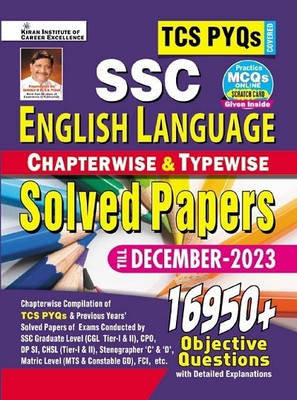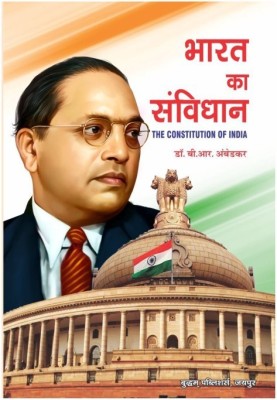

G.O.A.T Sale ends in15 hrs : 12 mins : 28 secs
Harbour, Dock And Tunnel Engineering (Paperback, R. Srinivasan)
Share
Harbour, Dock And Tunnel Engineering (Paperback, R. Srinivasan)
4.3
7 Ratings & 0 Reviewsख़ास कीमत
₹286
₹350
18% off
उपलब्ध ऑफ़र
T&C
T&C
T&C
T&C
Delivery
Check
Enter pincode
डिलीवरी20 जुलाई, रविवार
?
अगर 8:59 AM से पहले ऑर्डर किया गया
जानकारी देखें
Highlights
- Binding: Paperback
- Publisher: Charotar Publishing House Pvt. Ltd., Charotar Publication
- ISBN: 9789385039416, 9789385039416
- Edition: 30th, 2022
- Pages: 432
सर्विस
- कैश ऑन डिलीवरी उपलब्ध?
Seller
जानकारी
In the subject of Transportation Engineering, study of Harbour, Dock and Tunnel Engineering is essential. This well-known text-book now in its thoroughly revised and extensively enlarged Thirtieth edition, concisely formulates the basic principles of the subject matter in simple, lucid and easy language presented in two sections.
In this edition profusely added new matter meticulously also few chapters/topics are entirely rewritten with the inclusion of the latest developments in the field. Almost all the drawing are replaced with more detailing.
Section I – Harbour and Dock Engineering
is well-divided in twelve chapters. It discusses the topics on Harbour and Ports; Natural Phenomena: Tides, Wind and Waves; Protection facilities: Mound Breakwater, Wall Type Breakwater, Special Type Breakwater such as Floating Type, Hydraulic Type and Pneumatic Type Breakwater; Planning and Layout of Ports; Various other Facilities such as Docking Facilities (Wet Docks, Basins and Lock Gates); Repairing Facilities (Dry Docks, Slipways and Floating Docks); Approach Facilities (Entrance and Lock Gates); Loading Unloading Facilities (Quay Walls, Wharves, Piers, Dolphins, Jetties and Fenders); Storing Facilities (Aprons, Transit Sheds and Warehouses); Dredging Facilities and Guiding Facilities.
Section II – Tunnel Engineering
is also well-divided in twelve chapters. It discusses the topics on General Aspects of Tunnelling; Stages in Tunnel Construction; Shafts and Portals; Soil Classification and Various Tunnelling Methods for Soft Soils and Other Methods of Tunnelling; Tunnelling in Water Bearing Soils; Tunnelling in Rock; The New Austrian Tunnelling Method (NATM) — Sequential Excavation Method; Tunnel Lining; Drainage of Tunnels; Lighting, Ventilation and Dust Control in Tunnels; and Safety in Tunnel Construction.
The Salient Features of this book are:
* 312 Self explanatory neatly drawn sketches, photographs,
* 465 Examination questions at the end of each chapter and
* 14 Useful tables.
The book in the present form will prove to be extremely useful to the students preparing for the Degree examinations in Civil Engineering of all the Indian Universities, Diploma examinations conducted by various Boards of Technical Education, Certificate Courses as well as for the A.M.I.E., U.P.S.C., G.A.T.E., I.E.S., and other similar competitive and professional examinations. It should also be an immense use to practicing Civil Engineers.
Read More
Specifications
Book Details
| Publication Year |
|
| Edition Type |
|
| Book Type |
|
| Number of Pages |
|
University Books Details
| Degree/Diploma |
|
Dimensions
| Width |
|
| Height |
|
| Depth |
|
| Weight |
|
रेटिंग और रिव्यू
4.3
★
7 Ratings &
0 Reviews
- 5★
- 4★
- 3★
- 2★
- 1★
- 4
- 2
- 0
- 1
- 0
Have you used this product? Be the first to review!
Safe and Secure Payments.Easy returns.100% Authentic products.
Back to top









